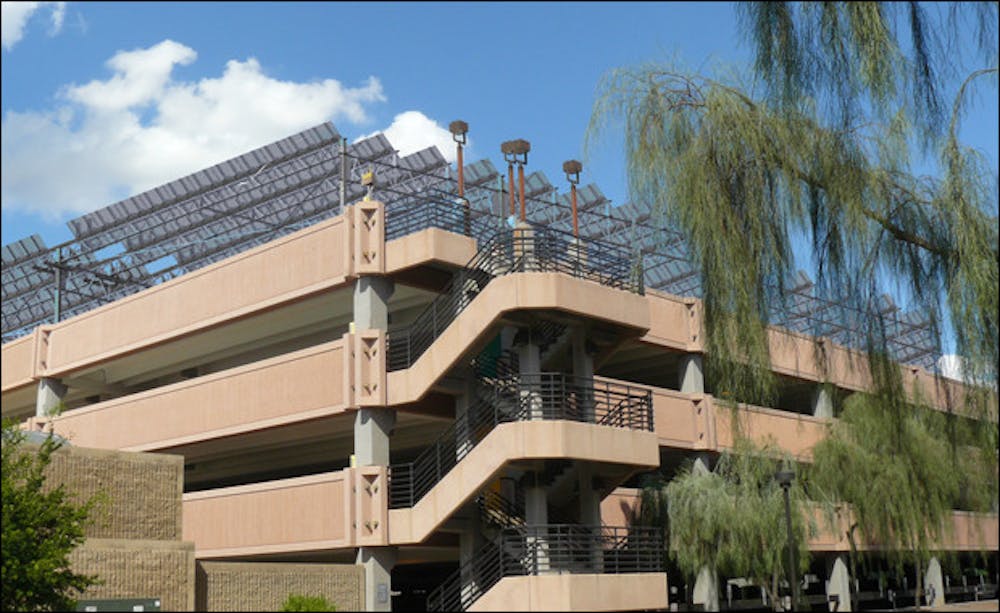The University will soon be using green power to save some green with an $11 million solar-panel project.
In a deal made with several companies, ASU plans to place seven solar panels on the top of the Apache Boulevard and Stadium parking structures by Dec. 31, said Bonny Bentzin, manager of University sustainability practices.
SolEquity Inc. is responsible for the installation, and the panels have been purchased from Suntech Power Holdings Co. Integrys Energy Services Inc. invested the money in the project, SolEquity spokesman Lee Feliciano said.
The University will pay no upfront costs for the installation, Bentzin said.
Rather, SolEquity will buy the solar panels from Suntech, complete the installation and maintain the panels, she said. The University will then purchase the power from SolEquity.
Feliciano said the entire project would cost roughly $11 million for SolEquity to complete. He said the 8,000 panels would account for about half of the project’s total cost.
Feliciano said it is not uncommon for an outside company to invest in projects like these for reasons like tax benefits and deductions.
The panels from Suntech feature innovative methods like tracking the sun’s rays in order to capture the most power, Bentzin said.
“Instead of having the panels at a stationary angle where they’re only efficient at a certain time, these will follow the sun and therefore increase the efficiency,” she said.
Construction started Sept. 29 on the panels on the Apache Boulevard Parking Structure and will soon begin on the Stadium Parking Structure, Bentzin said.
This installation will produce 1.6 megawatts of the 30 megawatts of power needed to provide energy for the Tempe campus.
This is about 5 percent of what the campus uses, Bentzin said.
Bentzin estimated the University should start saving money in about two years.
Feliciano said among many advantages of the deal the ASU made with SolEquity is that the University will not be penalized if the system goes down.
“It’s not that it’s a high-risk project,” Feliciano said. “It’s a pretty stable technology, but if the system happens to produce less than anticipated, the University will pay less for [the energy].”
Bentzin said the solar panels would show the nation that the University is doing all that it can to promote a green environment.
“Students and the ASU community want visual indicators that we’re making a commitment to sustainability,” Bentzin said.
She said the changes people can’t see are harder to understand than those that they can. “Solar installations — they’re like recycling bins, you can engage with them,” Bentzin said.
She said the University is planning for more installations on at least three campuses in the future.
Sustainability and political science sophomore Joe Hoxie said he is glad to see the University put the solar panels up, but it’s just one step in what ASU should be doing to promote sustainability.
“I’m excited that ASU has taken the time to promote sustainability from solar panels to trash compactors,” said Hoxie, who is also president of EcoAid, a company that helps businesses to be more environmentally friendly. “But there is so much more we should be doing.”
He said ASU could pursue more recycling and electric vehicles.
“I’d just like to see more,” he said.
Reach the reporter at allison.gatlin@asu.edu.




